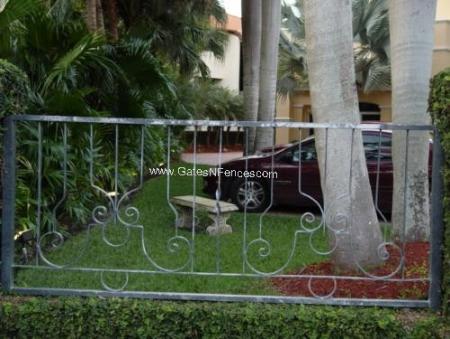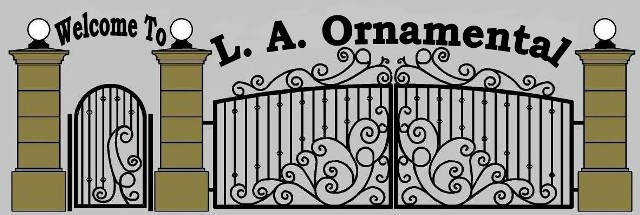
|
 |
THE LUCKY HORSE SHOE: Posts are 2"x2", Top and Bottom horizontals are 1"x2". there is anther horizontal which is 3/8"x1" the rest of the materials is 1/4"x1"
Development of ferrous metals technology and misleading new usages of the term "wrought iron" have created a dangerous confusion about the equivalence of today's commercially available architectural iron, known as mild steel, and true historic "wrought iron". Replacements in mild steel are fated to a short, ugly career if it is assumed that measures sufficient to protect the original historic work will be adequate for the replicated elements.
While these metals can both be "wrought" (archaic for "worked", according to Webster) by the smith with equal artistry, true historic "wrought iron", earned its name not on the blacksmith's anvil at all but in the smelting process itself! Modern mild steel is a high carbon steel possessed of an urge to recombine with oxygen and to return to its natural state, iron oxide, as rapidly as possible.
True historic "wrought iron" is a stable very low carbon iron that is capable of standing centuries to the elements as long as its surfaces are well drained and ventilated. Carbon atoms, it turns out, are the constituent element that induce ferrous metals to crave oxygen. In general, true historic "wrought iron" was smelted at relatively low, sub-molten temperatures and then "wrought", hammered while yet a red hot solid to beat out impurities.
These low temperatures result in a carbon content of about one twentieth that of mild steel. At higher temperatures, more carbon from the fuel is incorporated into the metal which both increases the strength of the material (good for structural applications) and the rate at which the metal will oxidize. So while true historic "wrought iron" will indeed rust, it does so in a very slow process without the reckless enthusiasm of mild steel.
|

